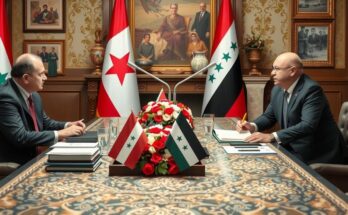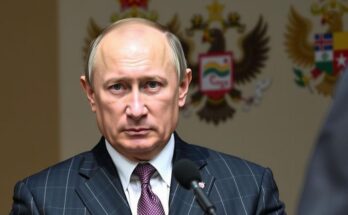Syria’s civil war has escalated with Hayat Tahrir al-Sham retaking Aleppo, marking a significant shift in the conflict. This advancement comes after years of foreign intervention and a fractured rebel alliance. Geopolitical factors, including Russia’s military commitments and the Israel-Iran conflict, shape the current dynamics, raising critical questions about the future stability of the region.
Syria’s civil war has seen resurgent violence as a reformed rebel alliance, Hayat Tahrir al-Sham (HTS), made significant advancements by retaking Aleppo with minimal resistance. This marked a stark contrast to the initial uprisings in 2012, where a peaceful protest against Bashar Assad’s regime transformed into a bitter armed conflict amid increasing foreign interventions by Russia and Iran, and the rise of extremist factions such as ISIS.
Over the years, despite considerable global inattention to the humanitarian crisis unfolding in Syria—resulting in millions displaced and hundreds of thousands dead—the new developments indicate a potential shift in the conflict’s dynamics, influenced by various geopolitical events, including the war in Ukraine and the conflict involving Israel and Iran.
As Russian military resources become stretched due to commitments elsewhere, and Hezbollah faces limitations due to losses in Lebanon, HTS’s resurgence raises questions about the implications of these transformations for the ongoing Syrian crisis. Political factors, including Turkey’s strategic interests, may also play a role in these recent escalations. The engagement of external powers in this multifaceted conflict continues to complicate efforts toward stability in the region, revealing how interconnected the current global landscape has become.
The Syrian civil war began in 2011 as a peaceful protest movement demanding democratic reforms, which was violently suppressed by President Bashar Assad’s government. The subsequent armed rebellion met significant foreign intervention, notably from Russia and Iran, ultimately leading to the rise of extremist groups within the opposition. Over the years, the conflict has resulted in a devastating humanitarian crisis, with millions of refugees and widespread suffering. Recent developments have led to further battles, especially as a new rebel faction takes advantage of changing international dynamics and shifting alliances in the region.
The recent resurgence of violence in Syria underscores the complex interplay of regional politics and international influences impacting the conflict. HTS’s takeover of Aleppo indicates not only a change in military fortunes but also reflects broader geopolitical shifts involving key players such as Russia, Iran, and Turkey. These developments serve as a reminder that Syria remains a focal point for significant international contention, as various nations vie for influence and control amid an ongoing humanitarian crisis.
Original Source: abcnews.go.com




